|
Tokyo, the late 1940s. Murakami (Toshirō Mifune) is a newly-promoted detective, who served in the army during the war. On a crowded bus, he loses his gun to a pickpocket, whom he chases but doesn’t catch. After confessing the loss to his superiors, he is sent in search of the pickpocket, going undercover in trying to crack the trade in illegal firearms. Meanwhile, a ballistics test proves that Murakami’s gun was used to mug a woman. Murakami teams up with the older detective Satō (Takashi Shimura) to hunt the man down.
The title of Stray Dog (Nora inu) is metaphorical, but Akira Kurosawa puts an actual dog in big close-up during the opening credits. The animal is panting in the oppressive summer Japanese heat, which is a motif throughout the film. We see plenty of sweaty people out on the streets, with fans (of the paper and electrical variety) put to much use in days before air conditioning. This titles sequence caused some controversy, with Kurosawa being accused of infecting the dog with rabies to obtain these shots. Of course he hadn’t done that, thankfully, but he had to write to the American occupying forces to set the record straight.
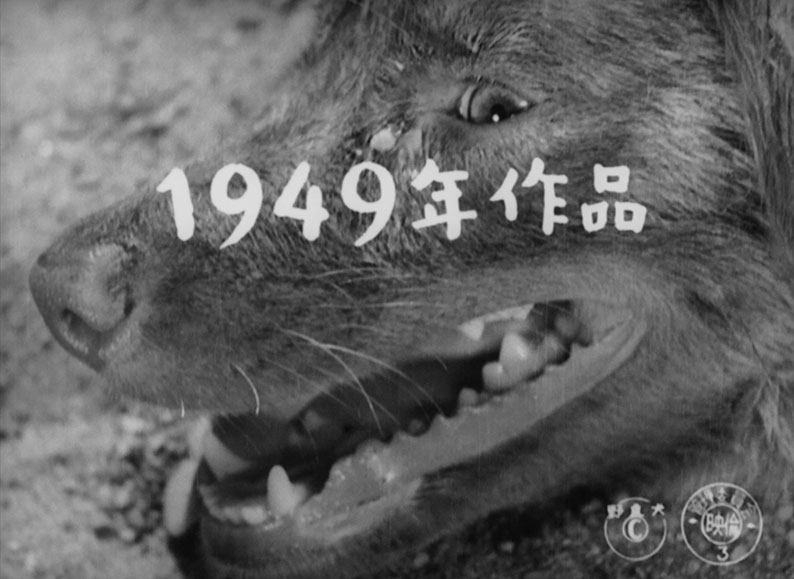
Stray Dog was Kurosawa’s tenth feature as director, aged thirty-eight at the time of shooting. That was part of the most prolific part of his career, with Ikiru (1952) ending his first ten years in the job and being his fourteenth. Kurosawa’s reputation in the West began with feature number twelve, Rashōmon (1950) and its win of the Golden Lion in Venice in 1951. That had been a breakthrough not just for Kurosawa but for Japanese cinema in general. Releases of his contemporaries such as Kenji Mizoguchi, Mikio Naruse and Yasujirō Ozu followed, though Kurosawa’s style and visual language was far more westernised than at least the latter two. However, Rashōmon and especially Seven Samurai (1955) saw him typecast for a while in Western eyes as a maker of historical samurai films as those were the ones which more readily saw the light of British and American projector lamps. His contemporary dramas, like Stray Dog, gained less traction and took longer to be seen in the West. Ikiru, mentioned above and clearly one of his great works, took seven years to be released in the UK, originally in a version shortened by some twelve minutes. Stray Dog didn’t have a commercial release in the UK until 2001, of which more below.
In outline, Stray Dog is a crime thriller, not far away from noir, though in their treatment Kurosawa and co-writer Ryūzō Kikushima take it away from that genre’s template. It was an original story, though inspired by an actual case. Kurosawa originally wrote the story as a novel, his avowed influence being the works of Georges Simenon. The novel was not intended for publication (and hasn’t been commercially published) as Kurosawa and Kikushima used it as the basis for their screenplay, a process of translation they found harder than they at first imagined. (It took two months rather than the anticipated ten days.) Another influence on the film on Kurosawa’s part was Jules Dassin’s Naked City, released in 1948 so Kurosawa would have seen it shortly before he started making his film. In that film, there are eight million stories in the Naked City (New York) and the film showed us one of them. There were no doubt at least as many in Tokyo, likely many more, and Kurosawa shows us one of them too. He uses his plot to enable us to take a tour of his country’s capital in the middle of a hot summer, in the early post-war years, with many areas notably run down, and the country under US occupation. This comes to the fore in a sequence of some ten minutes when Murakami tramps round parts of Tokyo. This sequence has no spoken dialogue (plenty of diegetic sound though), a lot of transitions using dissolves and superimpositions, and takes the film into almost abstract territory. This sequence was remarked upon as soon as the film came out, but ironically Kurosawa didn’t shoot it: it was the work of assistant/second-unit director Ishirō Honda, who later became a director in his own right, best known for the original Godzilla (1954). Many of the shots of Murakami from the waist downwards are actually of Honda doubling for Mifune. Kurosawa inserts more documentary material later on with a lengthy sequence set during a baseball game at the Korakuen Stadium, with staged scenes in the audience intercut with shots of the game filmed by a newsreel crew. Interiors were shot at Toho Studios, with some thirty different sets built.
Like every other Japanese filmmaker at the time, Kurosawa had to deal with the censorship imposed by the American occupiers. This included the sight of any symbols of Japanese nationalism (so Mount Fuji was out) and indeed any indication that Japan was an occupied nation. However, some of the latter did slip through, such as a brief shot where US jeeps go past. The baseball game isn’t one reference, though as the sport had been popular in Japan since before the War, though of course it is one strongly associated with the USA.
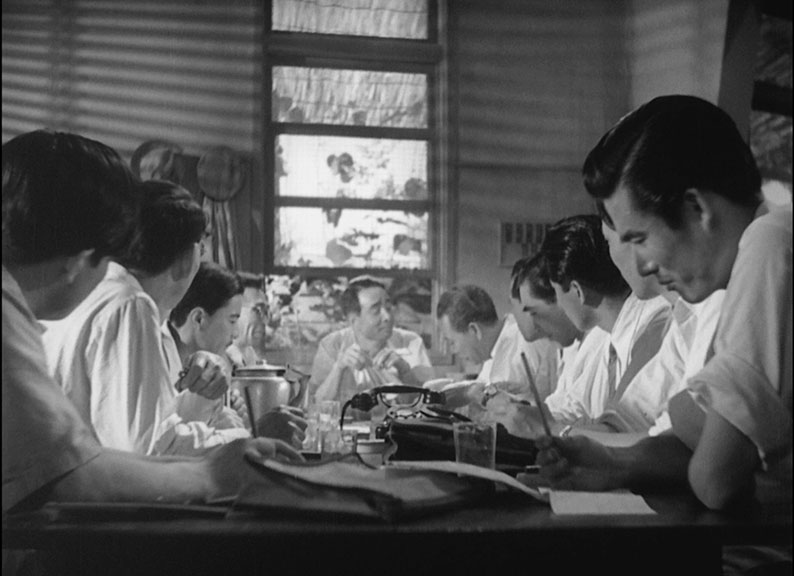
The two leads became Kurosawa regulars. Toshirō Mifune made sixteen films with him, of which this was the third, having made Drunken Angel the year before and The Quiet Duel the same year. No doubt his Kurosawa roles would start with his leads in the historical films, but he’s fine here as the ex-military man turned cop, as the film suggests not a particularly good one. Playing his older and more worldly wise colleague is Takashi Shimura, whose work with Kurosawa went back to the director’s very first feature, Sanshirō Sugata (1943). He is of course indelible as the terminally ill man striving to make a difference in the last months of his life in Ikiru. He went on to be Kurosawa’s most frequent acting collaborator, in twenty-one of the thirty films the director made. Also acting in the film are Minoru Chiaki, Noriko Honma and Isao Kimura as the villain Yusa, all of whom went on to work again with Kurosawa, Chiaki ten more times. The film was the screen debut of Keiko Awaji as hard-faced dancer Harumi, Yusa’s girlfriend. By all accounts, including her own, not the best-disposed person on set, aged fifteen or sixteen. She never worked with Kurosawa again, but went on to have an acting career of forty years.
Stray Dog went up and down in Kurosawa’s estimation of his own films. He at first thought it was too dominated by technique but later in his autobiography said it was the smoothest shoot of his career and that this comes across in the film. Released in Japan in October 1949, it didn’t see US distribution until 1963. In the UK it bypassed cinema release. It may well have been shown in retrospectives at places like the National Film Theatre (though I haven’t checked this) and did have its first British television showing on BBC2 in 1999. It didn’t have a UK commercial release until a BFI DVD in 2001, followed by a cinema reissue the next year.
Stray Dog is released by the BFI on Blu-ray, a disc encoded for Region B only. As mentioned above, the film didn’t have UK distribution until many years later, but I’ve no doubt it would have had an A certificate from the (then) British Board of Film Censors if it had come out in the 1950s or 1960s. There is however a moment of surprising frankness for the time, when a woman is referred to as having her “time of the month” and being “impossible” as a result. I doubt that the BBFC or indeed the Production Code Administration in the USA would have allowed such an overt reference to a woman’s menstrual cycle at the time or for at least a decade later*, and if the film had gone before the BBFC then that dialogue might well have been sanitised in the subtitles or not subtitled at all. Stray Dog wasn’t submitted to the Board until 2001 for the BFI’s DVD release, and again a year later for the cinema reissue, when both times it was passed uncut at PG, the reason cited being “mild violence”. That, quite justifiably, is the certificate it bears on this disc.
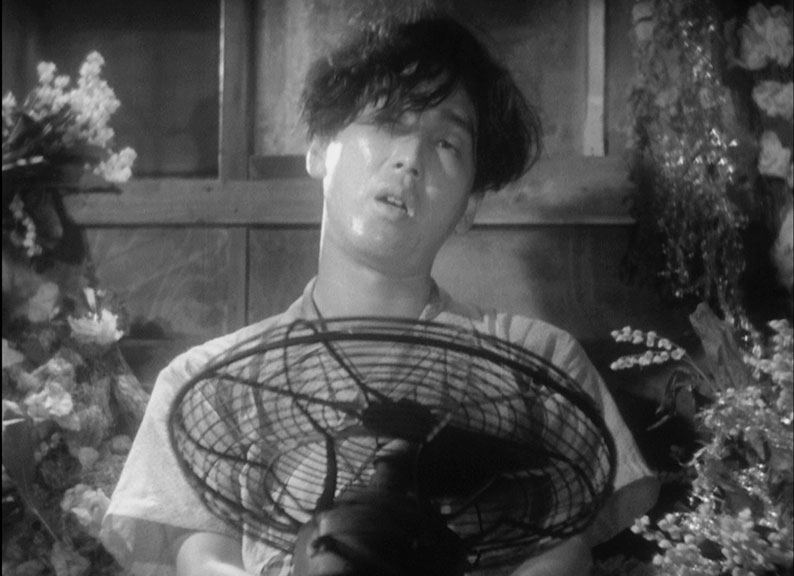
The film was shot in black and white 35mm, which would at the time have been nitrate stock and release prints. As you would expect from something from 1949, it is in Academy Ratio. The transfer is in the correct ratio of 1.37:1 and derives from Toho’s 4K restoration from an original master positive. Blacks, whites and the all-important greys seem fine, grain is natural and filmlike. There is some softness, particularly in scenes involving process shots such as the dissolves mentioned above. Some of this may be due to the nitrate origins and the fact that we’re a few generations away from the original negative which I would assume is lost or unusable. You probably could have distinguished between the staged sequences and the documentary footage of the baseball game in an original 35mm print, likewise the back projection in a train scene, but this restoration and transfer does make the differences quite obvious.
The sound is the original mono, rendered as LPCM 2.0. There’s not much to say here, except that it’s clear and dialogue, music and sound effects are well balanced. English subtitles are switched on as default, but are optional if your Japanese is good enough to do without them. I spotted no typos in them, but as I have no Japanese I can’t vouch for the accuracy of the translation. You do see some alternative translations in the clips shown in the It is Wonderful to Create documentary on this disc. Jasper Sharp’s featurette, being in English, has no subtitles available.
Commentary by Kenta McGrath
This commentary was recorded for this release. McGrath is an academic based in Perth, Australia, but significantly for this film he is Japanese-Australian and a clearly deep knowledge of Japanese history and culture informs this track. There are no doubt many references to Japanese history and society which would no doubt elude non-Japanese and non-Japanophile viewers such as myself, but McGrath is able to elucidate them. He also displays a considerable knowledge of Kurosawa’s filmography, his style and techniques, from the uses of lenses and camera movement, to structure and pacing. As he says, Stray Dog is often “inefficient”, with “lags and detours”...and all the more interesting for it. The film is also a police procedural featuring a cop who isn’t that good at the procedure part. McGrath does draw on other critics’ comments at times, for example the late Donald Richie who thought the ten-minute-long sequence of Murakami walking through Tokyo being a shortcoming in a film he didn’t rate very much. Other critics have seen the sequence in terms of Murakami’s character, a recreation of his previous existence as a soldier, and of an evocation of atmosphere. Likewise, the theft of the gun which begins the story can be seen as an emasculation or as a loss of social identity, the weapon being part of Murakami’s raison d’être as a policeman. There is a lot about Kurosawa’s attention to small details, some of which you may well miss on a first viewing...and McGrath admits that he missed them himself. He does think that some of these are small flaws in the film due to Kurosawa not emphasising them enough. There’s plenty about the comparison between the characters of Murakami and Satō. This is quite a dense commentary track with only a few dead spots, and there’s plenty to be going on with.
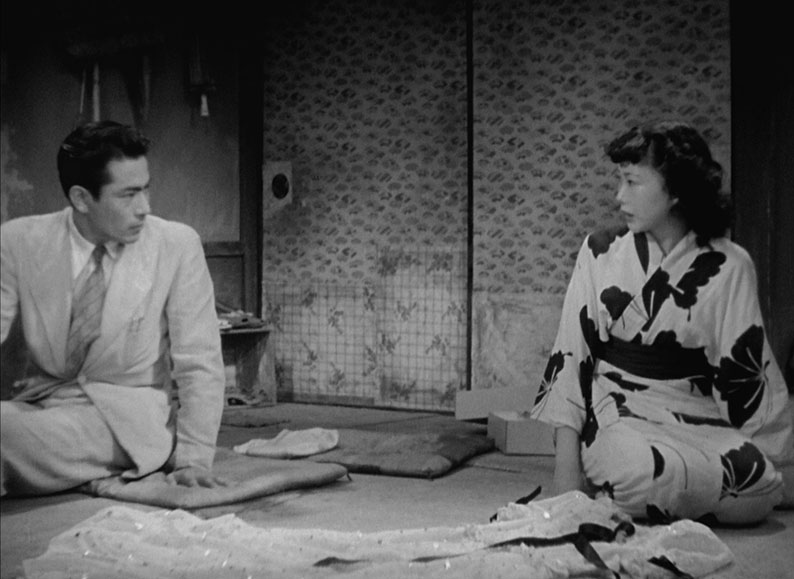
A Japanese Tale (30:27)
In contrast to the above, this featurette by Jasper Sharp, with him talking to camera, takes a wider view of Kurosawa’s career. Sharp discusses the release of Kurosawa’s films in the west, beginning with the Venice Golden Lion for Rashōmon. At first, his historical dramas were the ones which saw the screens of British cinemas, with his contemporary films taking longer to arrive. As for Stray Dog, Sharp talks about its origins, written as a Simenon-style novel before it became a screenplay, and the film’s influences: mentioning for example Bicycle Thieves. Sharp also discusses the effect of the US occupation on Japanese film censorship, and the ways this is reflected in the film and those by other filmmakers.
It is Wonderful to Create: Stray Dog (32:39)
“It is Wonderful to Create” is a Kurosawa quote, a sentiment he no doubt shared with other creatives in many different media. Hence the title of a series of half-hour featurettes made in 2002, each one taking a reasonably in-depth look at one of Kurosawa’s feature films. One was included n the BFI’s Ikiru release and another is on High and Low, released simultaneously with this disc. Kurosawa died in 1998 and isn’t represented here in archive footage. However, we do see others from both sides of the screen. Inevitably much of the production detail can be found elsewhere on the disc, but it’s useful all the same, such as Kurosawa originally writing the story as a novel before changing it into a screenplay, the controversy over the dog in the opening credits, Ishirō Honda’s role in the film, and so on. Technical aspects you might not hear about otherwise, such as the cinematography (Kurosawa’s use of telephoto lenses) and audio, with words from the sound supervisor and effects artist.
Booklet
The BFI’s booklet, available with the first pressing of this release only, is slimmer than usual, sixteen pages plus the covers. That’s not to say that it isn’t worthwhile, though. The main essay is “Kurosawa’s Criminal Influences” (spoiler warning) by Barry Forshaw. Given that Forshaw is the author of Euro Noir and British Crime Film, and as his title indicates, he tackles Stray Dog as a crime film, beginning with an acknowledgment that the fact that Kurosawa made contemporary crime films at all might come as a surprise to those who know him primarily from the likes of Seven Samurai. You could argue that Rashōmon, historically set though it is, is about the investigation of a crime from four different and mutually incompatible angles. Forshaw traces the influences on Stray Dog, in particular Simenon, with Satō maybe being a Japanese counterpart to Jules Maigret, particularly in his sympathy for women in dance halls and on the periphery of the sex trade. He looks at the film’s production and the contributions of Shimura and Mifune, ending with an admonition to trust the tale rather than the teller. In other words, the film is much better than its director’s own estimation of it. He calls the film “one of the most provocative and challenging films of Kurosawa’s illustrious career”.
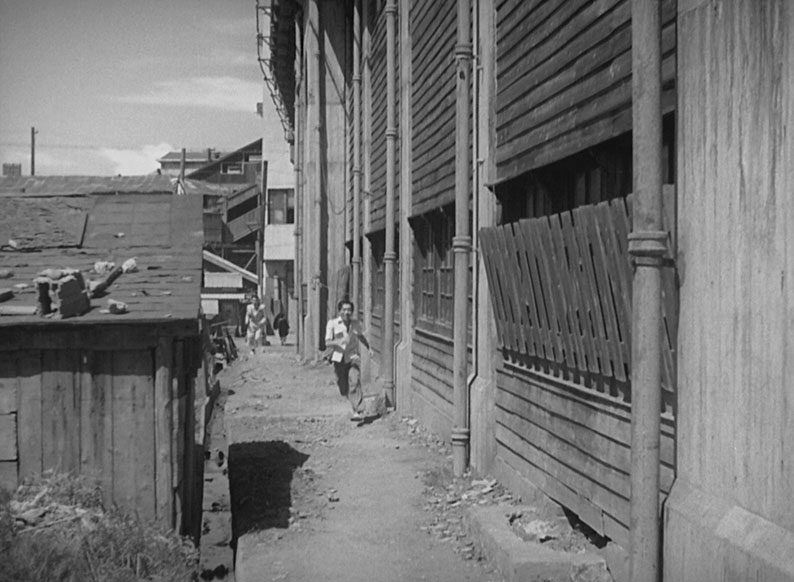
The other items in the booklet are reprints. First are two pages from Philip Kemp, an essay that appeared in the booklet for the BFI’s DVD release in 2001. Then there are another two pages, this time from Kurosawa himself, originally published in Sight & Sound in 1964, originating in the Donald Richie-edited Kurosawa on Kurosawa. This is the source of Kurosawa’s comments that the film was “too technical” and that he had “not one real thought in it”. This also contradicts his later claim that the film had been a smooth shoot. He talks about how he and score composer Fumio Hayasaka had a hard time scouring Tokyo record shops for the right music for a scene with Harumi, finally settling on a recording of the song “La paloma”, The difficulties in shooting the scene made the sound man cry with frustration.
The booklet also includes a cast and crew listing and credits for the extras on the disc.
Ultimately a solid entry in Kurosawa’s filmography (though that’s a high bar), particularly among his contemporary-set work, Stray Dog stands up well on this Blu-ray releases, supplemented by its commentary and other extras and, if you buy one of the first pressing, the booklet as well.
|